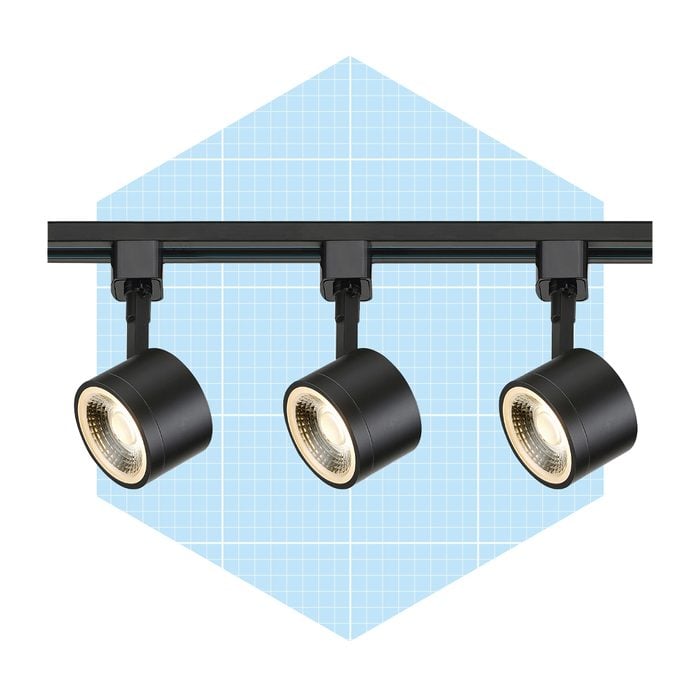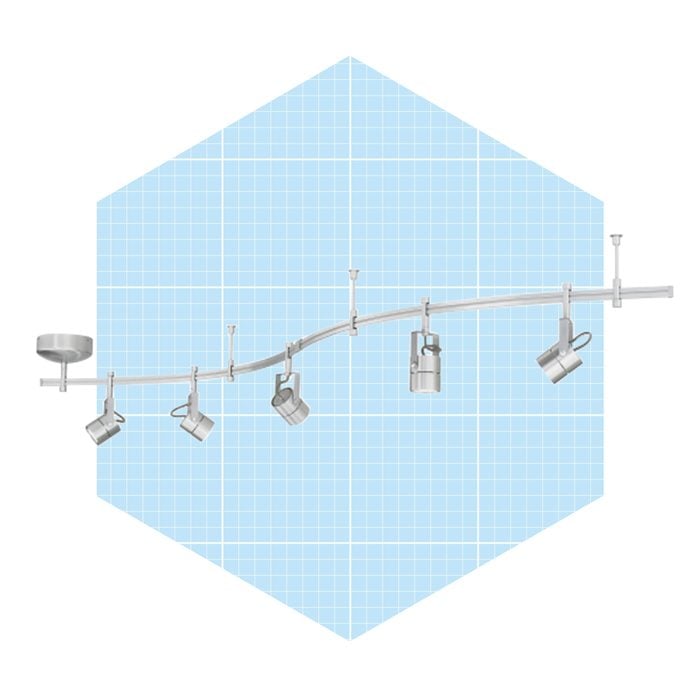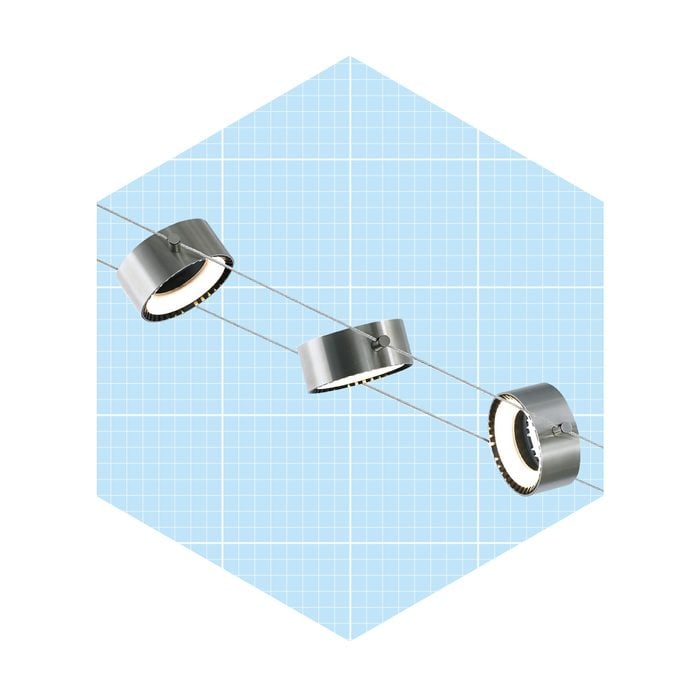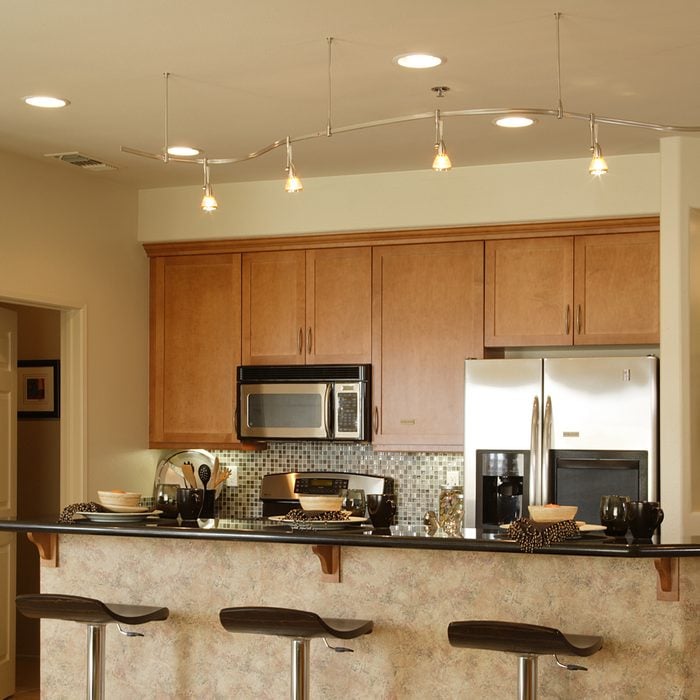Tired of cooking in the dark? Kitchen track lighting provides multiple light sources, without the hassle of installing multiple fixtures.
3 Types of Kitchen Track Lighting

Standard Kitchen Track Lighting
Standard track lighting features a rigid track mounted to the ceiling, with heads or pendants attached. Johnson says this type is ideal for “kitchens without recessed lighting, living rooms with limited power sources, and is an especially great option for wood ceilings where you cannot install recessed cans.”
Line-voltage, a direct extension of your home’s existing electrical circuit, powers standard track lighting. According to Nick Yahoodain, CEO of Advanced Builders and Contractors, line-voltage lighting is much more DIY-friendly because it doesn’t require installing a separate transformer, as low-voltage systems do.
According to Johnson, depending on the number and type of heads, cost can range from a few hundred dollars up to $1,800 for a 175-sq.-ft. kitchen. This Nuvo Lighting Track Kit ($214) includes a four-foot track and three LED bulbs.

Monorail Track Lighting
Unlike the rigid linear track of standard track lighting, monorail tracks can be curved or bent. And they’re suspended from the ceiling, not attached. This makes the track itself more of an aesthetic element because it can be further customized with different finishes, colors and shapes. It’s great for those seeking a sleek, high-end look in their kitchen.
Monorail track lighting uses a low-voltage system, requiring a separate transformer to lower the 120-volt current to 12V or 24V. It also can accept a wider variety of bulb types, letting you choose from multiple beam sizes from wide (40 degrees) to narrow (10 degrees).
Although the transformer makes monorail track lighting somewhat more complicated to install, you don’t necessarily need to hire a professional. John Williamson, a former chief electrical inspector for the state of Minnesota, says a true beginner might be in over their head. However, he says, “A DIYer with intermediate or better skills could easily make the required electrical connections.”
Assembling standard track lighting, however, is typically more of a challenge than the electrical aspect. That’s why Williamson and Johnson recommend hiring a lighting designer. With a pro compiling a detailed parts list and providing the exact layout, installation can be done fairly quickly. But this additional step makes monorail track lighting an expensive choice.
“Most systems are over $5,000, depending on size and complexity,” Johnson says.

Cable Track Lighting
Cable track lighting suspends the heads on a thin wire stretched between turnbuckles mounted to the ceiling or wall. “Cable track lighting is especially useful if you need to attach to walls, high open ceilings or a combination of both,” Johnson says.
We’ve seen cable track lighting work well with high, vaulted ceilings. The cables can be positioned lower than other light fixtures, so there’s less distance for the beam to travel and diffuse.
The cables and exposed hardware give cable track lighting an industrial, minimalist look. That makes it well-suited for contemporary homes but out of place in a rustic or farmhouse-style home.
Like monorail track lighting, a DIYer with intermediate skills can install the low-voltage power supply. However, as with monorail, Johnson recommends hiring an experienced lighting designer to compile a parts list. She recommends these LED heads as a high-quality option for a cable track.
Similar to monorail, cable track lighting can cost up to $4,000 for a quality system.





















